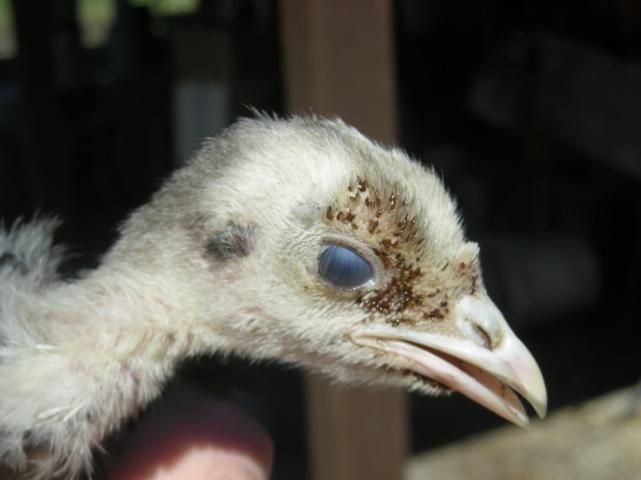The sticktight flea is an occasional pest of dogs and cats, as well as of chickens and other birds. Poultry sometimes have clusters of these fleas around the eyes, comb, wattles, and other bare spots (Figure 1). These dark-brown fleas have their heads embedded in the host's flesh and cannot be brushed off. Sticktight fleas are commonly a problem on dogs, which have contact with barnyard fowl. Typically, on dogs and cats, the sticktight fleas will be found around the margin of the outer ear or occasionally between the toe pads. They have also been reported on horses, pigs and humans.

Credit: P. E. Kaufman, University of Florida
Health Effects
While sticktight fleas are not known to transmit any diseases, their attachment can lead to secondary infection. Irritation produced by feeding, along with infection and the sheer numbers that may be present, can cause the eyes to swell shut, and the host can starve to death. Young animals succumb to anemia produced by the fleas' feeding.
Biology and Behavior
Before mating, both sexes hop around freely. However, upon fertilization the female attaches (by her mouthparts) to the host and spends the rest of her life in that position. Eggs are laid and fall to the ground where the developing larvae feed on organic debris, including the adult flea feces. After several weeks the larva spins a silken cocoon covered with dust and dirt in which it pupates. The adult may emerge within days or, under adverse environmental conditions, may remain quiescent within the cocoon for several weeks or months. The newly-emerged adult flea seeks a host, mates, and the females attach to the host to begin a new generation.
Appearance
Under magnification it is apparent that the sticktight flea lacks both the genal and pronotal combs (ctenidia) possessed by the cat flea (Figure 2). The sticktight flea is one of the smallest fleas found on domestic animals, usually measuring less than half the size of the cat flea.

Credit: P. E. Kaufman, University of Florida
Control
Sticktight fleas can be removed with tweezers by grasping and pulling firmly. An antibiotic ointment should be applied to the area to prevent infection. If fleas are too numerous to remove individually, a flea product registered for on-animal use should be applied according to label instructions. Care should be taken not to get any product into the animal's eyes. See ENY-205 Fleas, for additional information on fleas in general. After treatment, dead fleas may remain attached to the host. To avoid reinfestation, treat the premises to eliminate flea larval development. There are several insecticides registered for treatment of outdoor areas for fleas. Burning of infested organic material, such as animal bedding and poultry litter, has been recommended. Wire cages at least 3 ft. above the ground should be used to minimize chances of sticktight flea infestation.